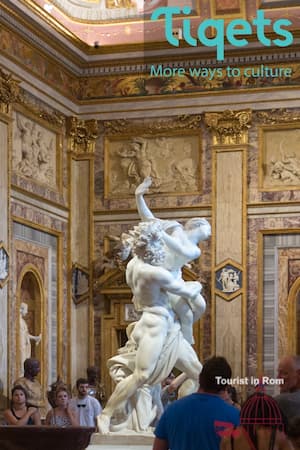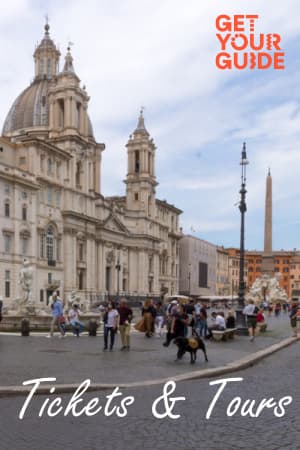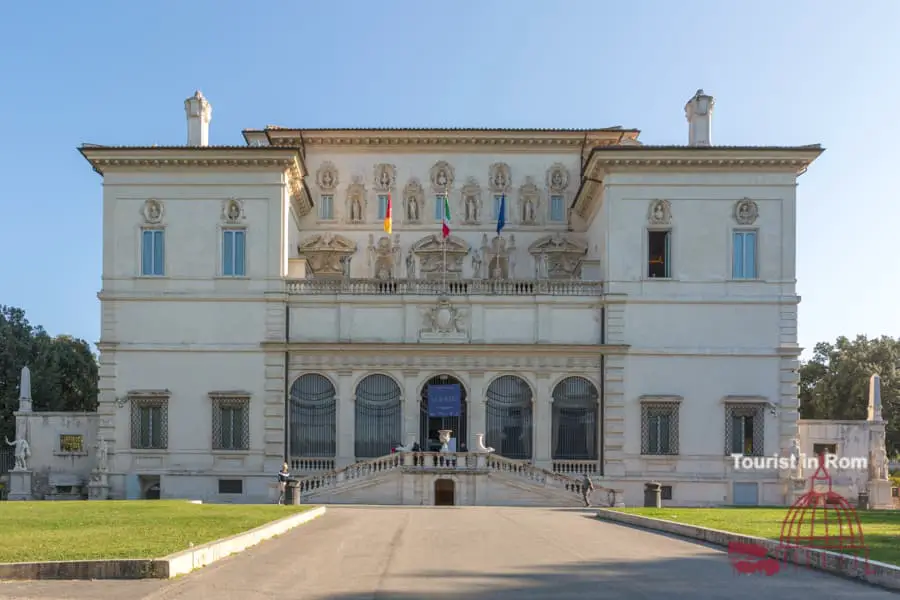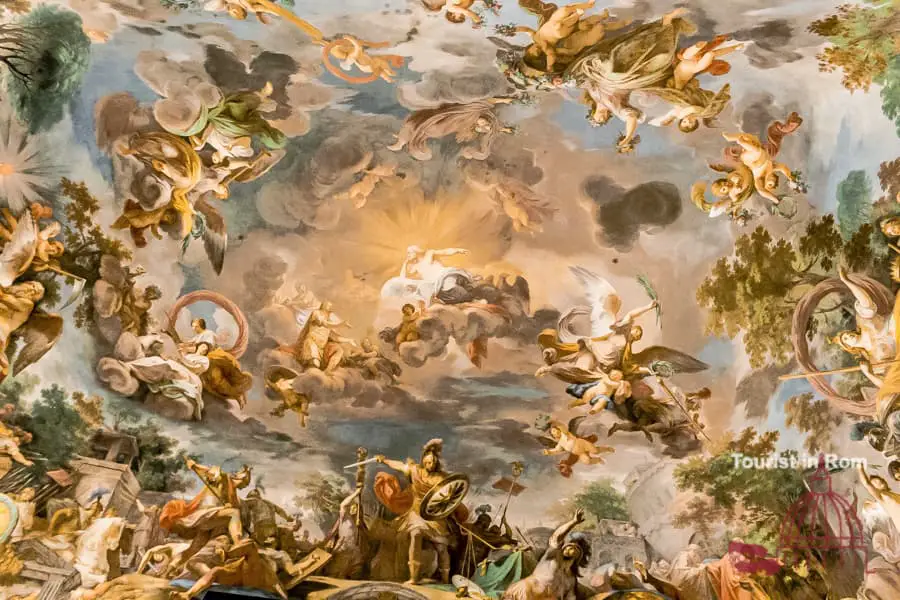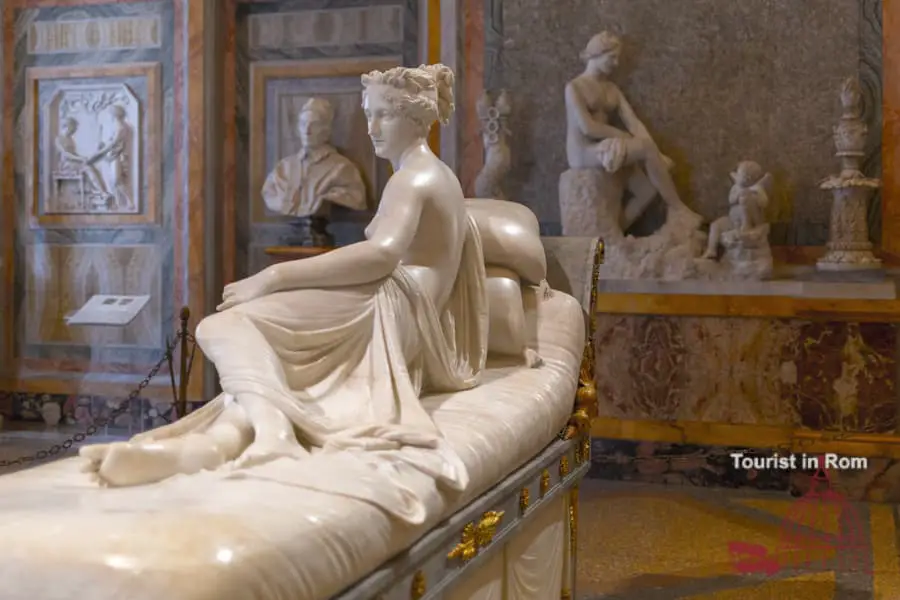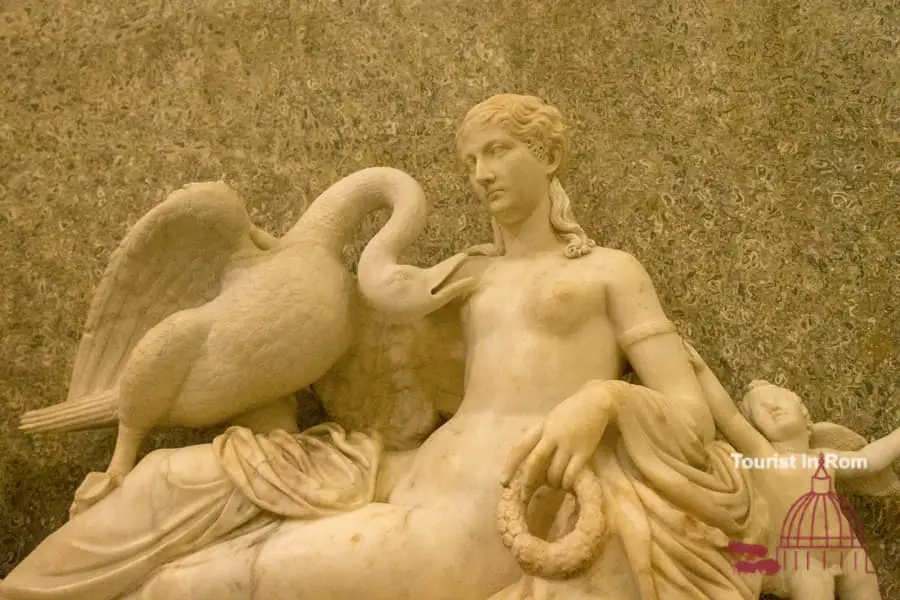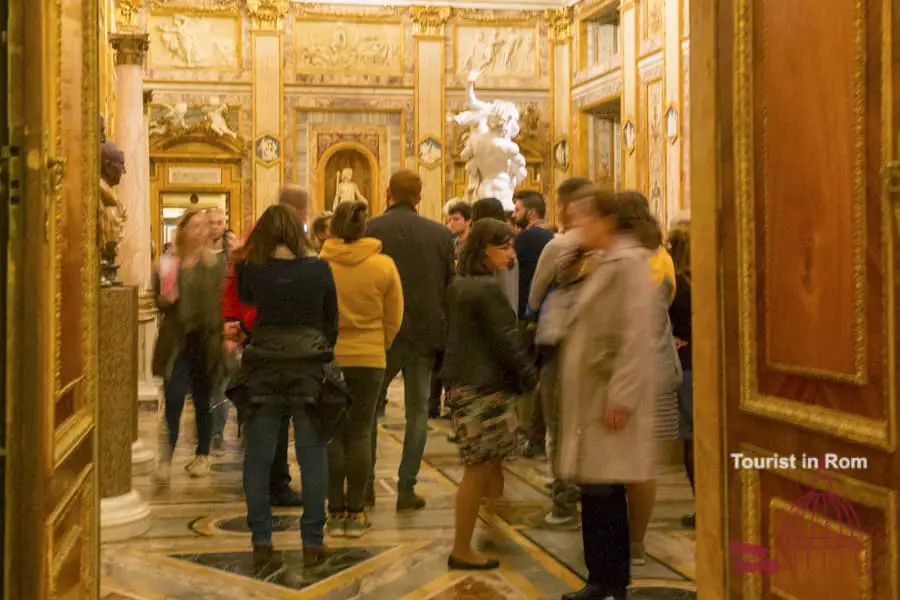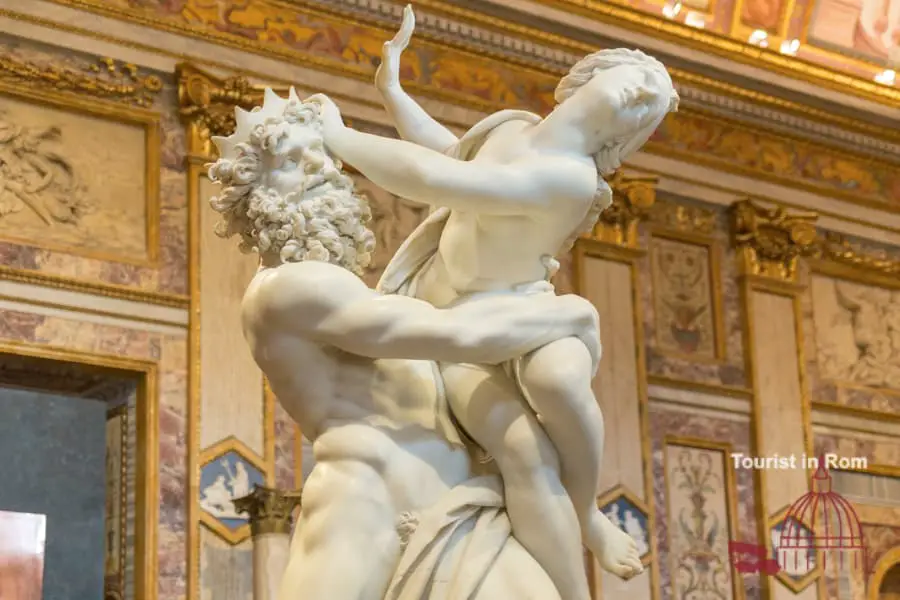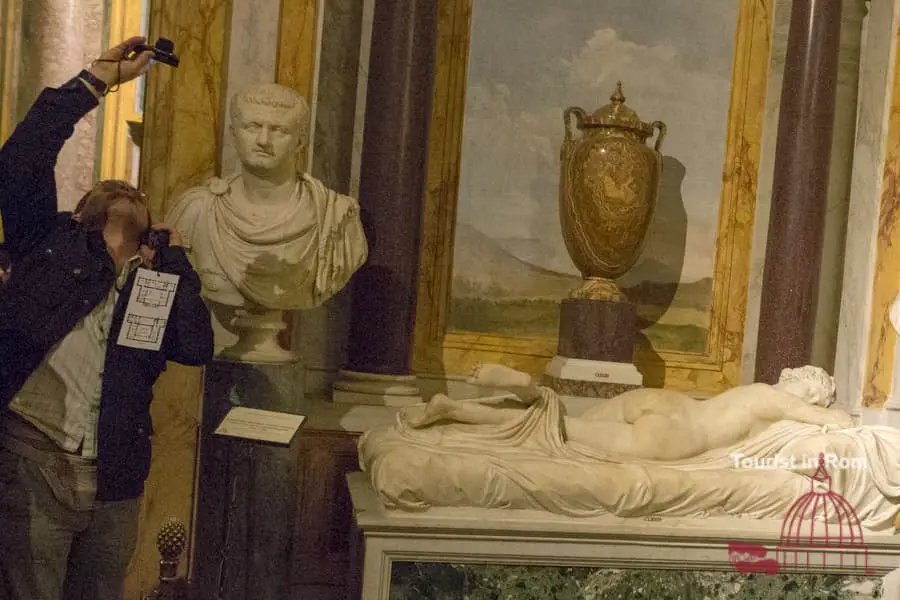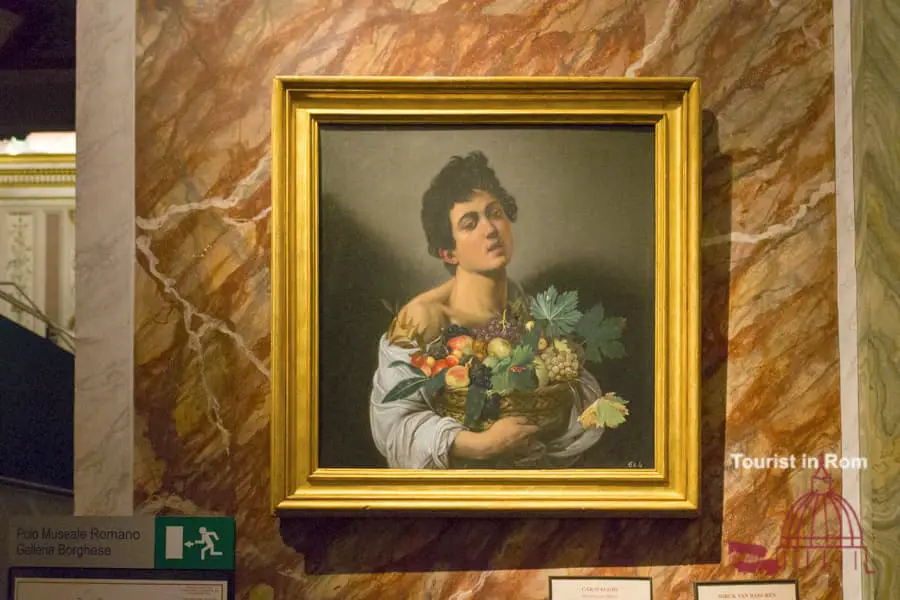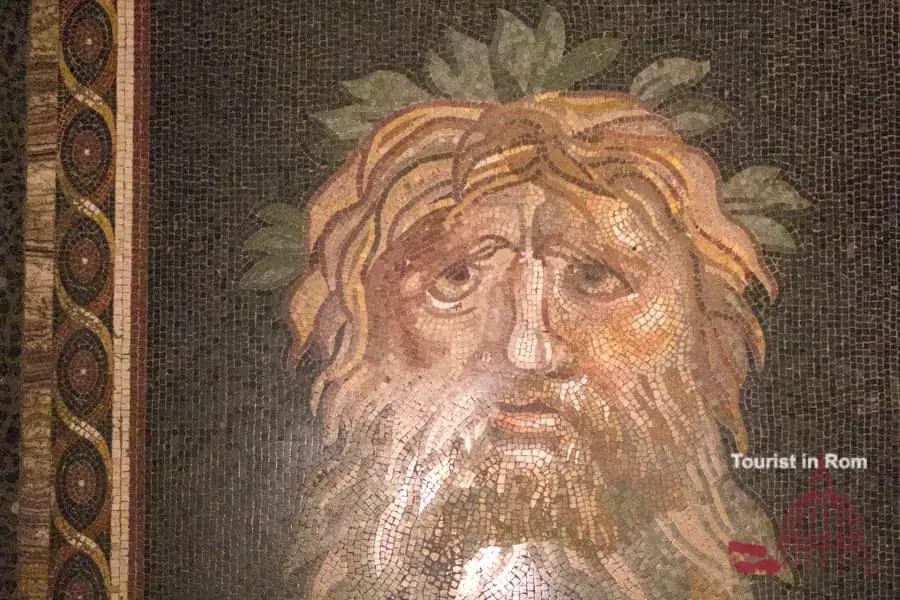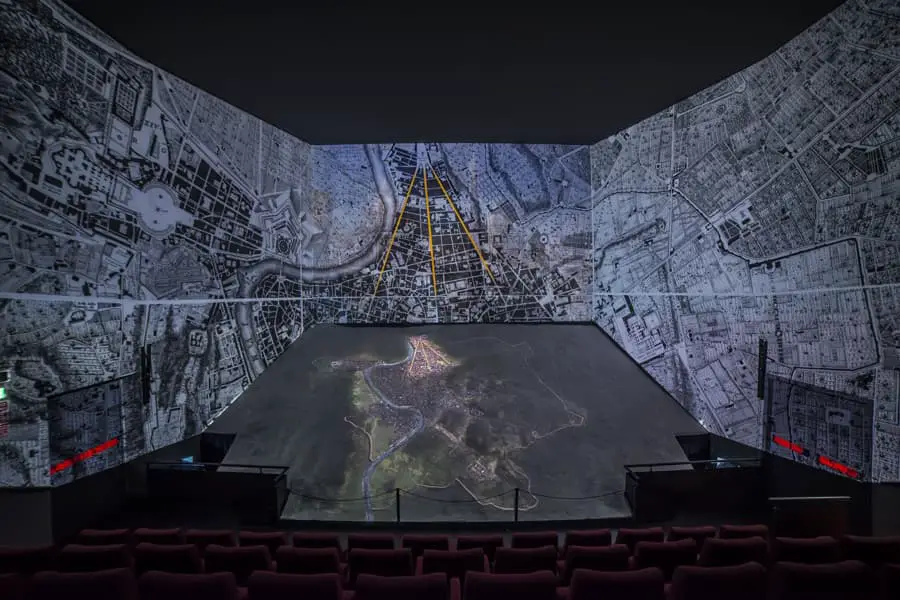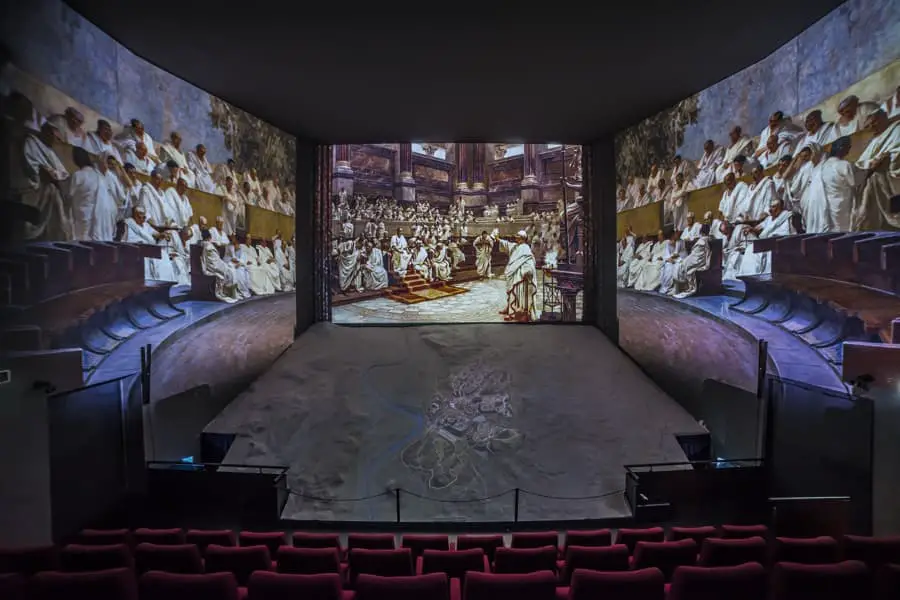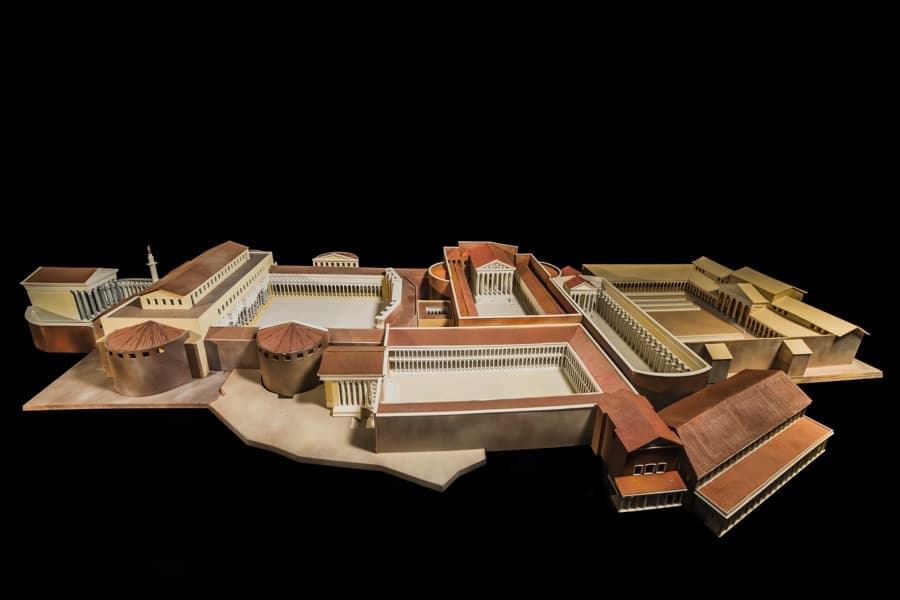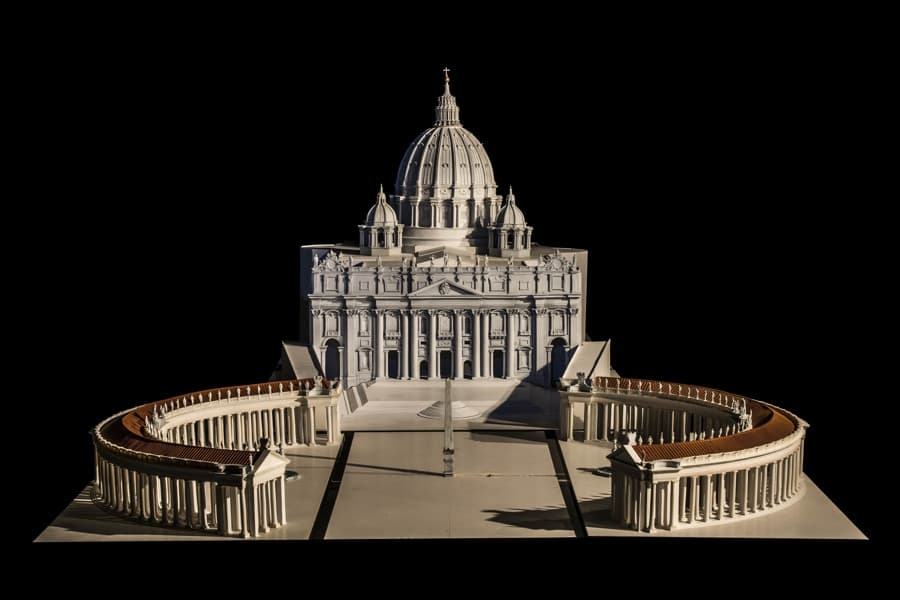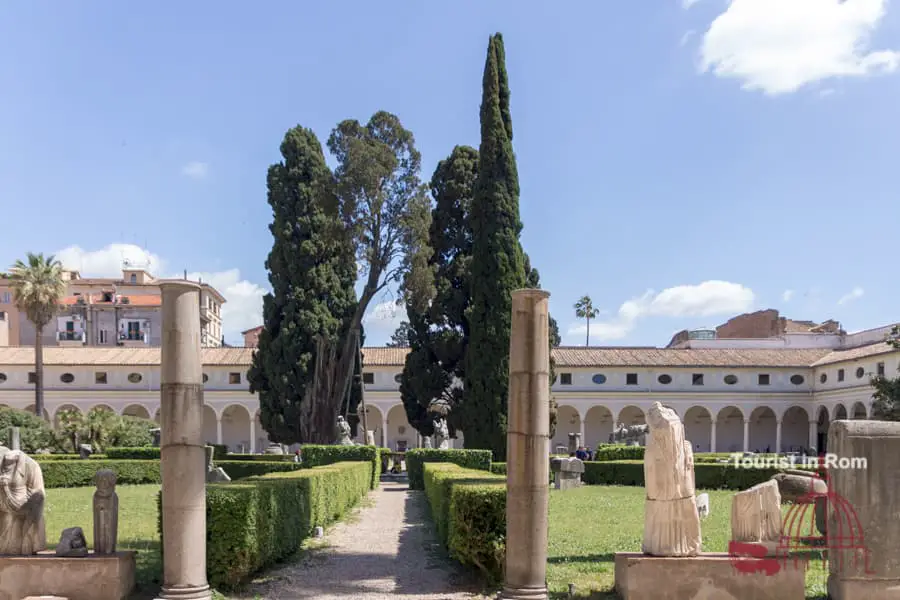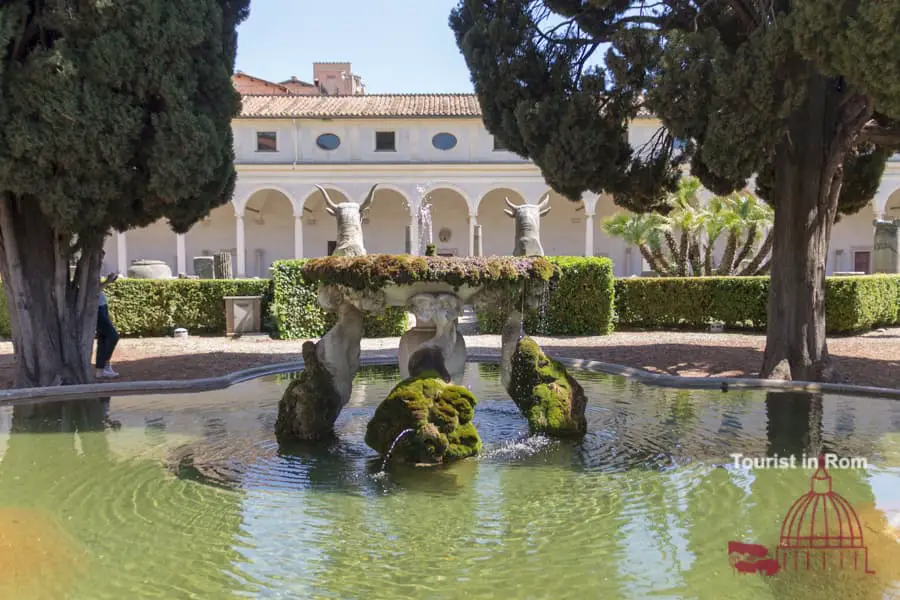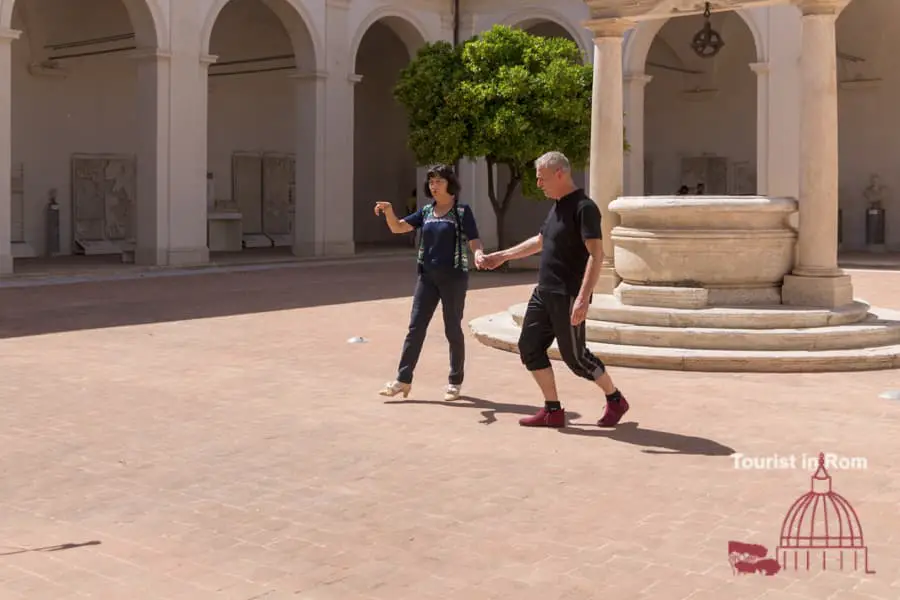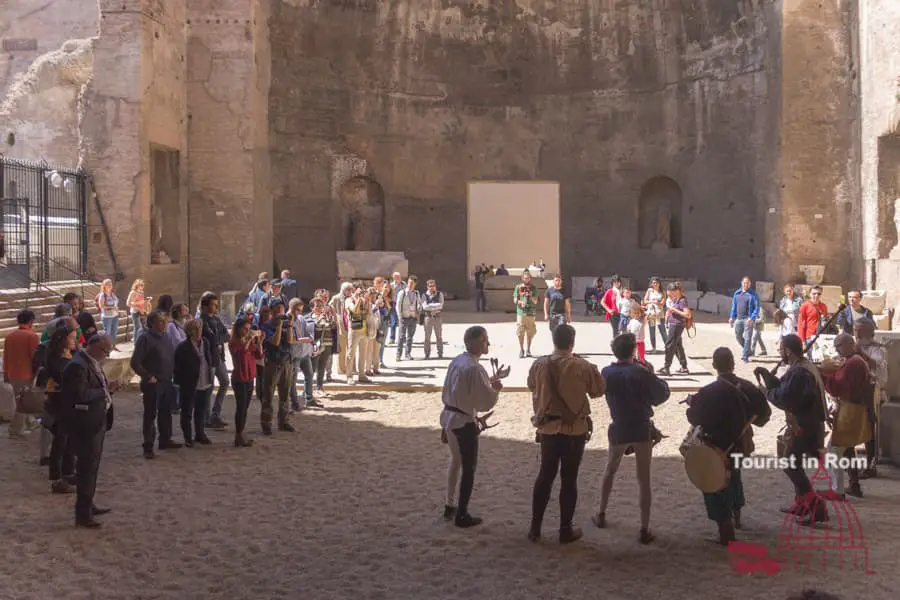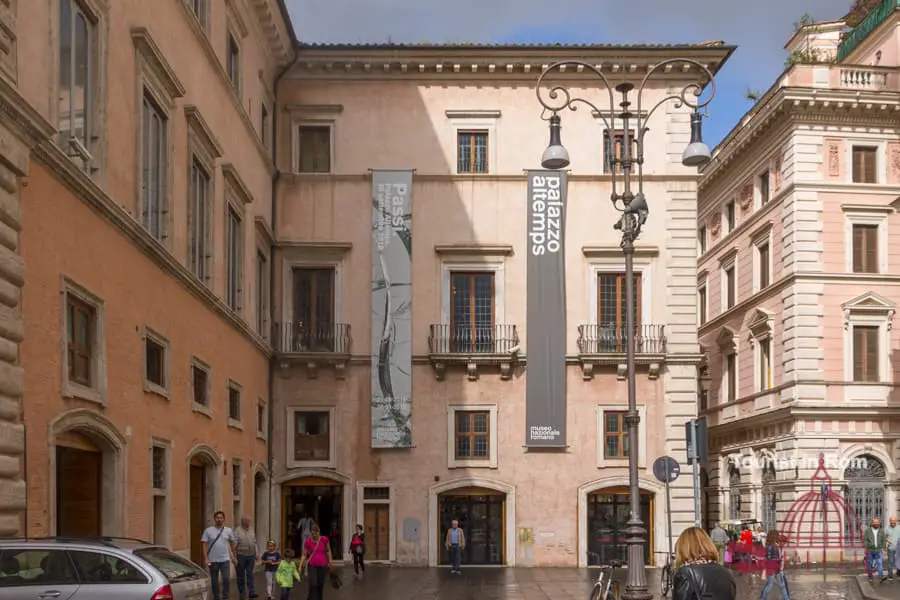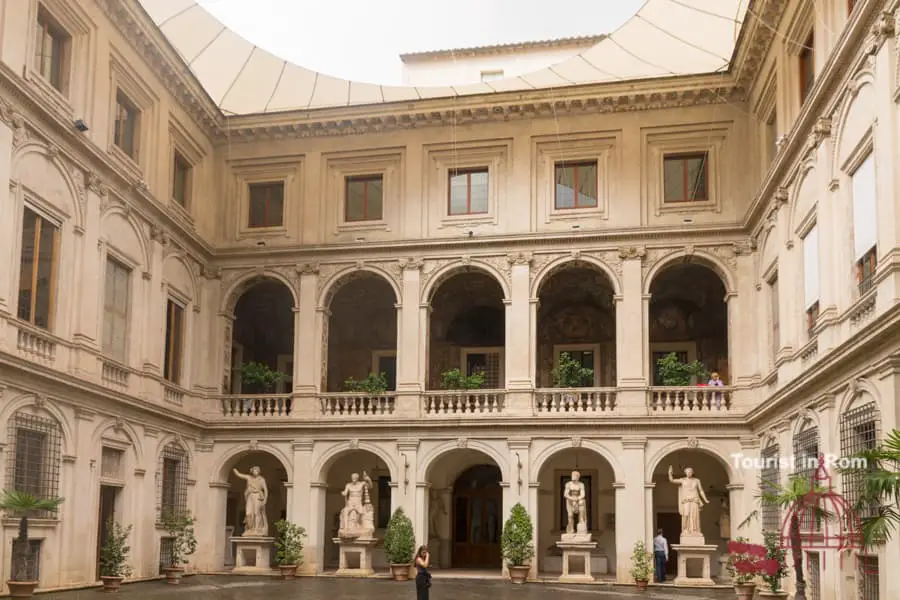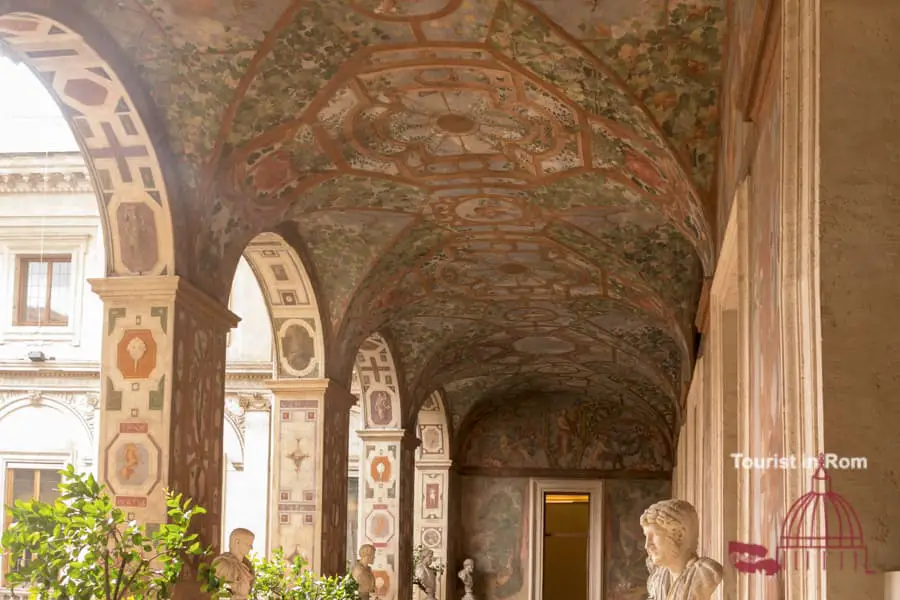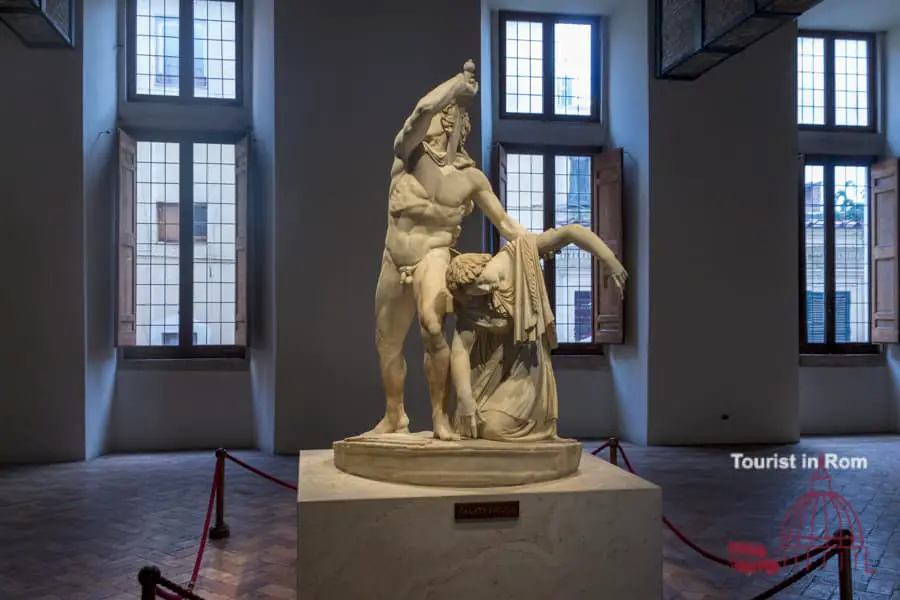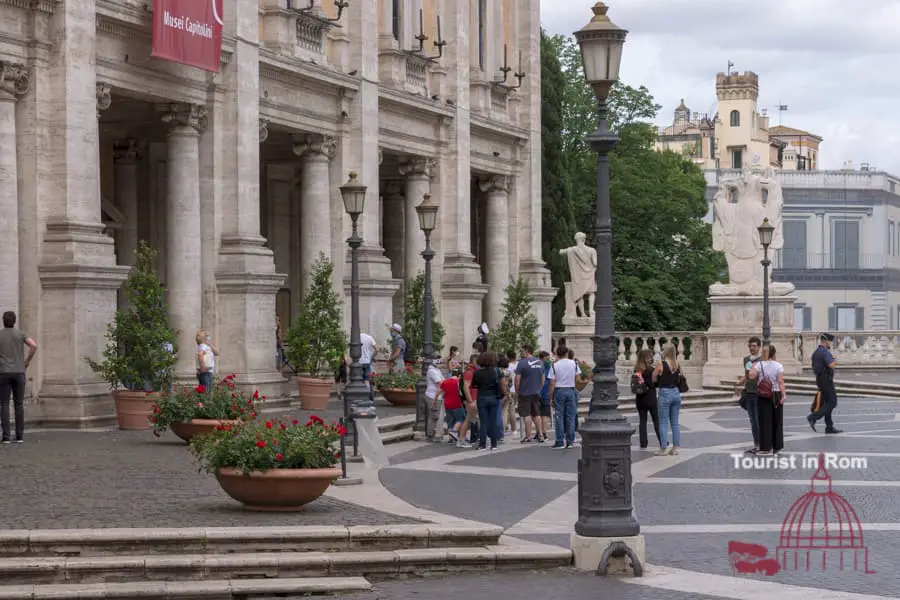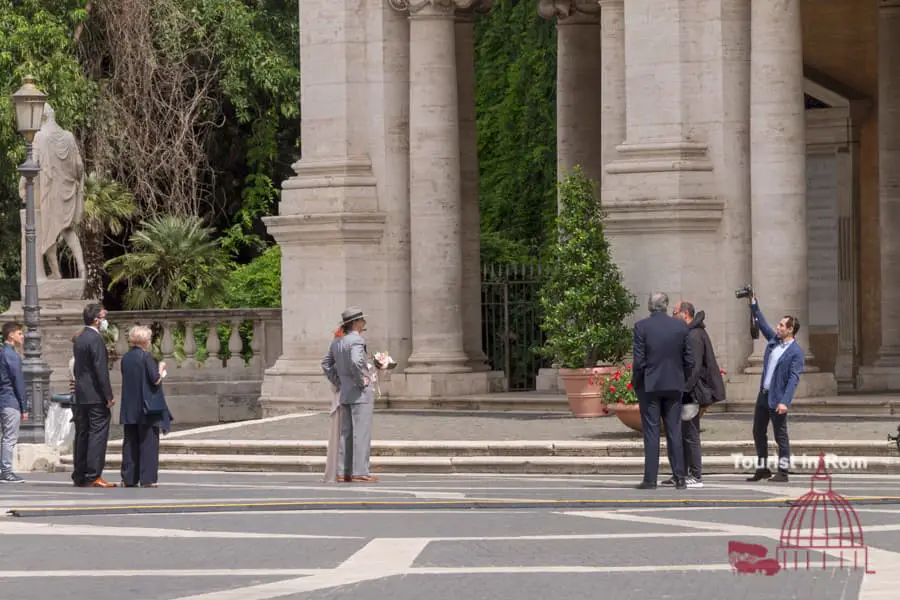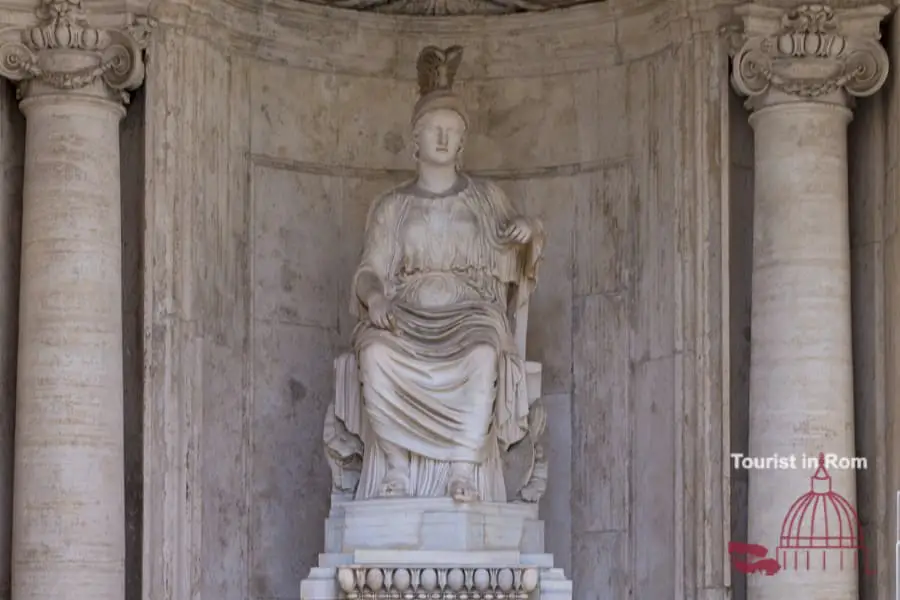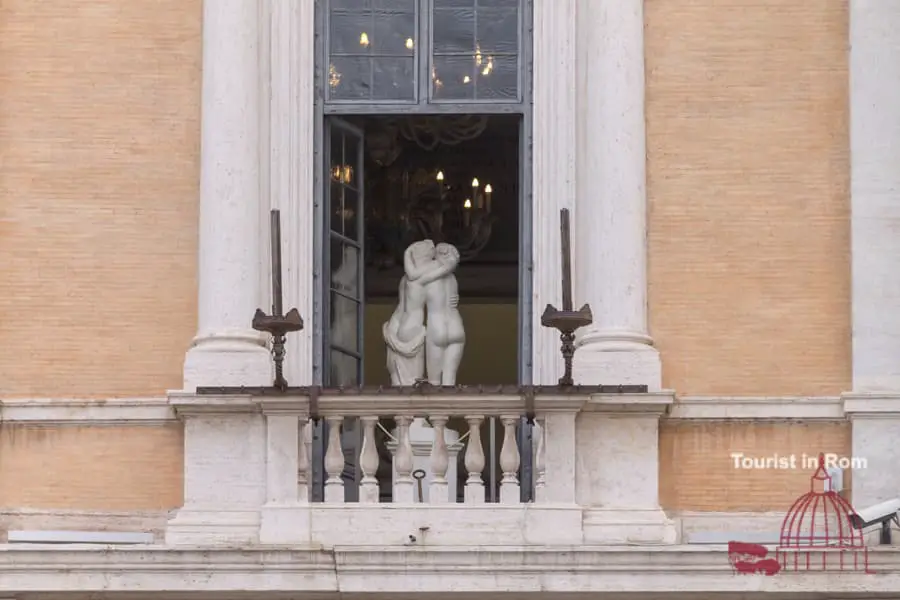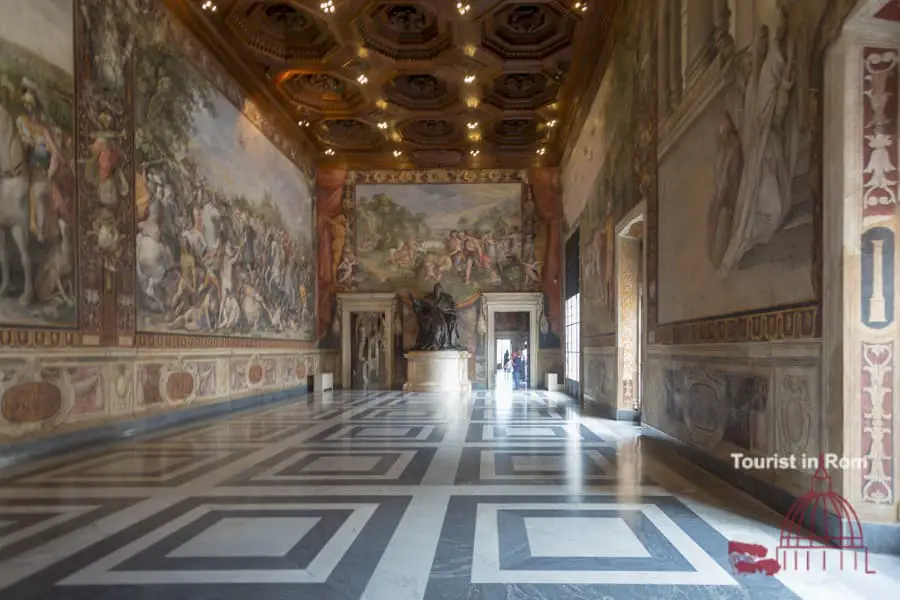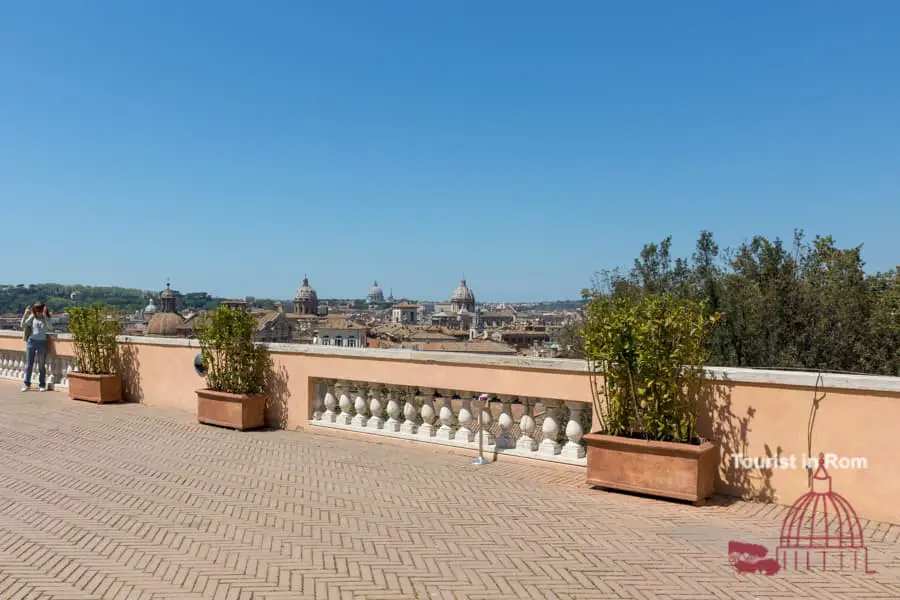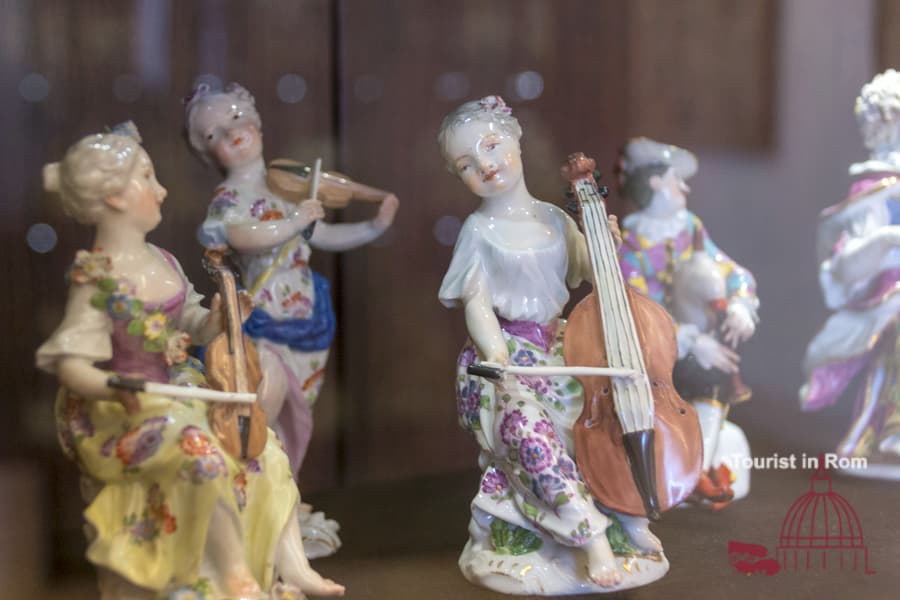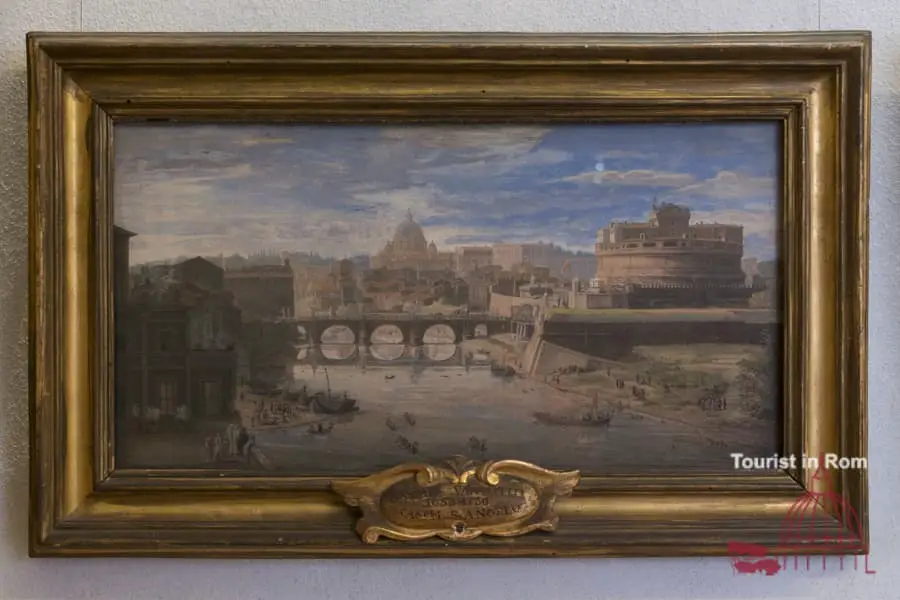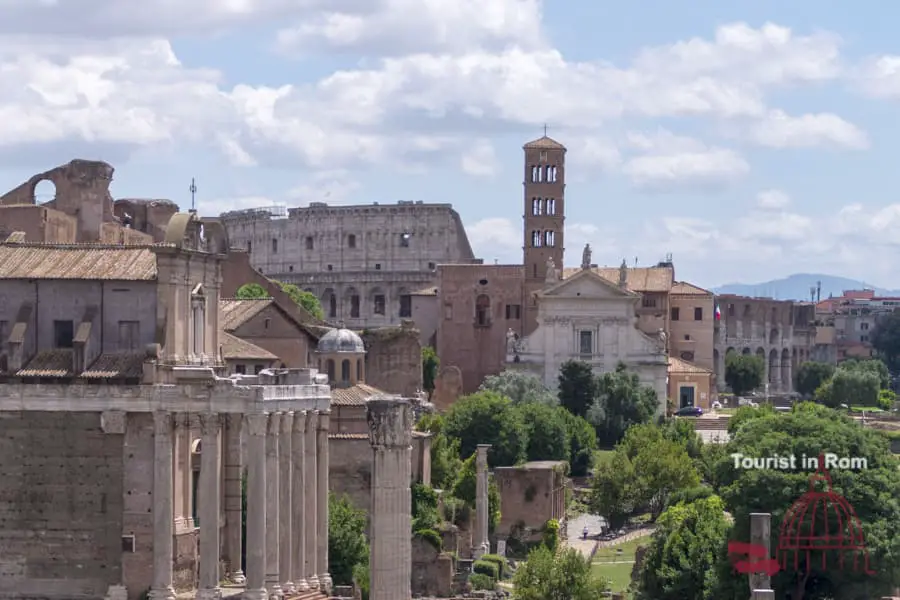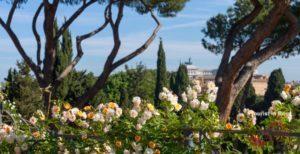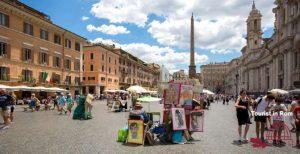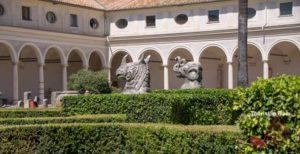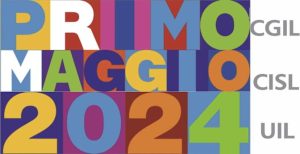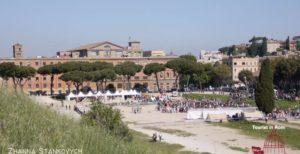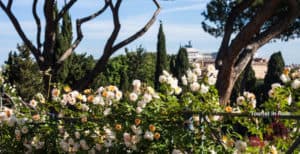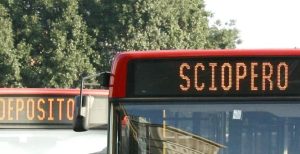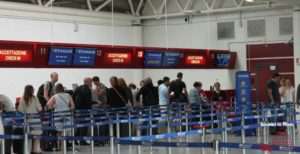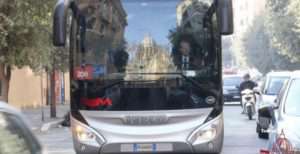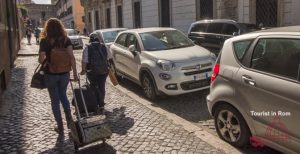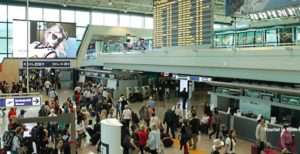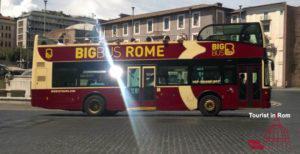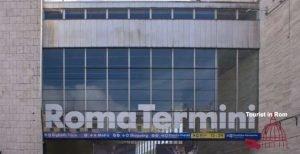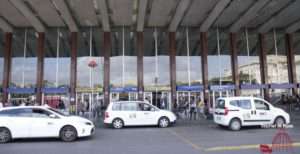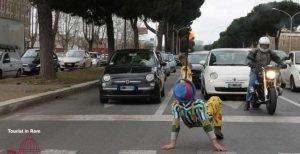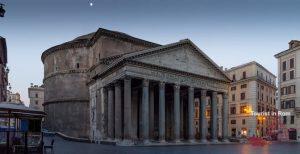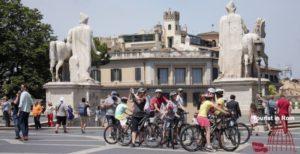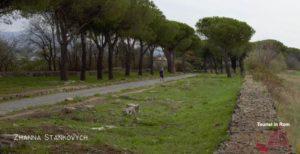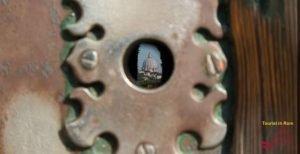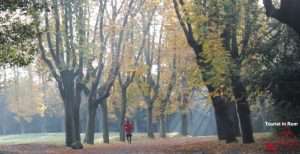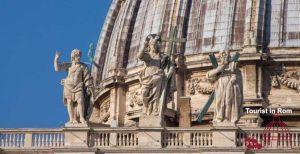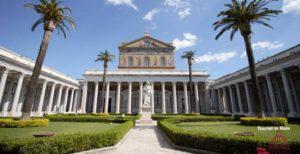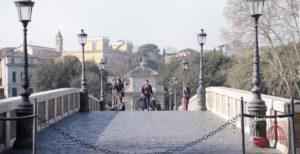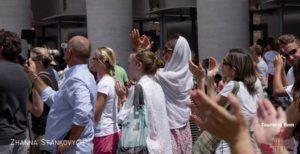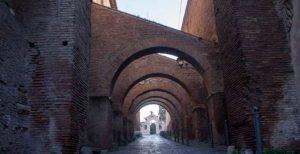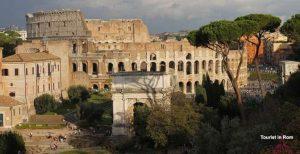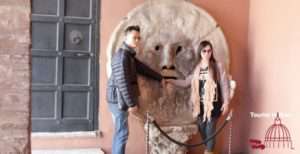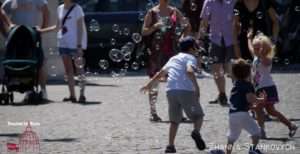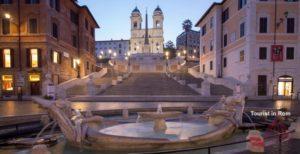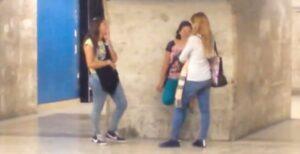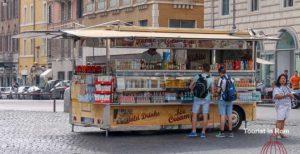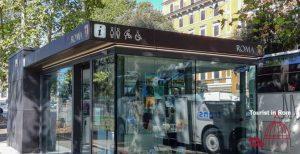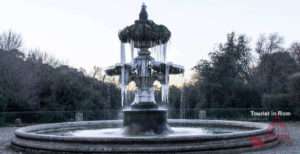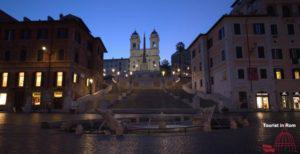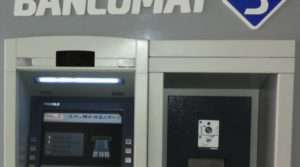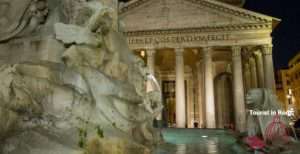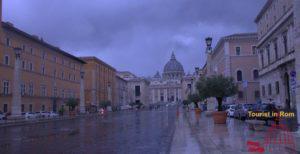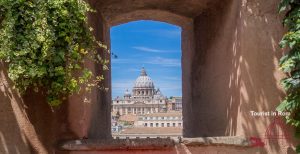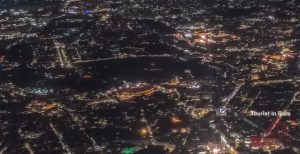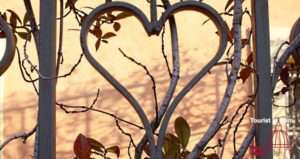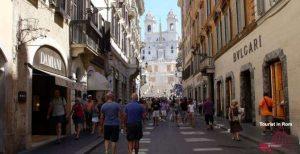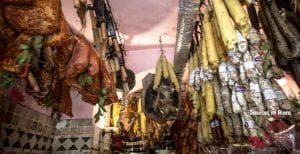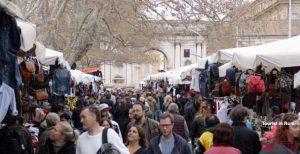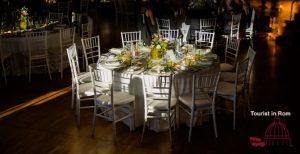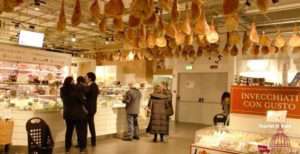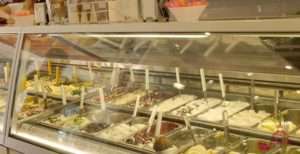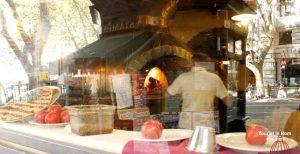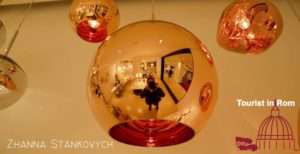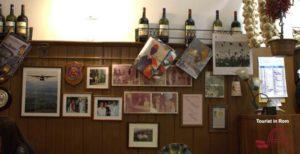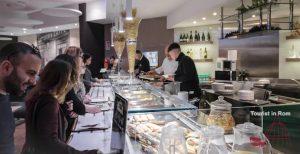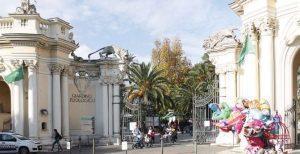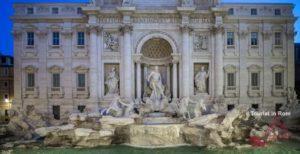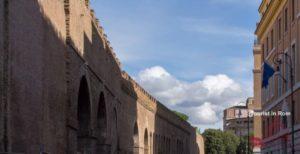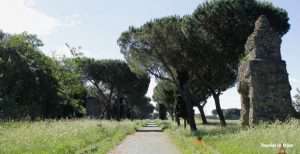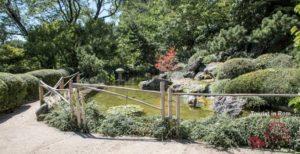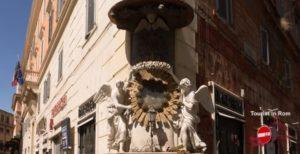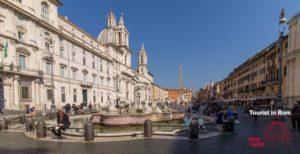Rome offers museums for every taste. There are countless works to see from over 2,700 years to modern times. Here you will find an overview, the choice is yours.
Even today, during excavations and construction work, discoveries from antiquity are made and can be visited. Popes, princes and rich citizens have collected art and left their traces in Rome. There are many traces of rulers from all over Europe who moved to Rome as conquerors or as pilgrims. And, of course, contemporary art is added every day.
The Top 5
The 5 best museums in Rome enjoy very high visitor numbers. Accordingly, it is important to book in time at these museums. Often they are booked up for several weeks in advance.
Even if you can no longer get tickets for the top 5 or it is too crowded for you, you will find many interesting alternatives here.
1. Colosseum
The Colosseum is the most visited museum in Italy. The oval masonry amphitheater has survived for about 2,000 years despite earthquakes and destruction, so we can still get an idea of what life was like in ancient Rome.
There are tickets to visit the first two floors of the Colosseum, which also allow entry to the Imperial Forums, the Roman Forum and the Palatine. Furthermore, there are tickets that additionally allow a visit to the Arena.
Guided tours are highly recommended, as they allow a better understanding of the importance of the structure and its history. There are also guided tours where one descends to the underground supply rooms. However, you can only spend a short time underground as the tours are tightly timed. Very atmospheric are the tours that take place in the evenings in summer.
At the Colosseum, you have to be at the security check 15 minutes before the reserved entrance time.
In the 24 hours before or after the reserved entrance time, you can visit once the Forums and the Palatine.
Opening hours
Entrance Colosseum: at the reserved time
Entrance to the Imperial Forums, Roman Forum and Palatine: 9:00
Closing: depending on the season, between 16:30 and 19:15. See more in our monthly overviews.
Tickets and guided tours
How to get there
Piazza del Colosseo Metro B Colosseo, Tram 3, Bus 51, 75, 85, 87, 1182. Vatican Museums
The Vatican Museums attract nearly 7 million visitors a year.
They house collections of the popes from ancient Egypt to modern times. They also include parts of the Apostolic Palace with rooms painted by Raphael, the chambers of the Borgia Pope and the Sistine Chapel.
The Vatican City Gardens can only be visited with guided tours on foot or with a ride in an open bus. Visits to the gardens can be reserved in addition to admission to the Vatican Museums.
Opening hours
Admission: at the reserved time Closing: 18:30
Special opening hours and days with free admission can be found in our monthly overviews.
Tickets and guided tours
at Tiqets:
at GetYourGuide:
3. Castel Sant’Angelo
At Castel Sant’Angelo there are often long queues and it is recommended to buy the ticket in advance.
At Castel Sant’Angelo there are often long queues and it is recommended to buy the ticket in advance.
The building originated as mausoleum for Emperor Hadrian and was repeatedly modified. Over time, Castel Sant’Angelo has served as a prison and refuge for Popes and as barracks. Some rooms can be visited only with a guided tour.
Opening hours
Tuesday – Sunday 9:00 – 18:30, closing 19:30, closed January 1, May 1 and December 25.
How to get there
The Castel Sant’Angelo houses some exhibitions and offers magnificent viewpoints. You climb up through 7 levels and are rewarded with a magnificent view. For people with disabilities there is an elevator to the middle level.
Lungotevere Castello 50 Bus 23, 34, 40, 982 (Transpontina/Conciliazione) – 23, 34, 46, 62, 64, 115, 280, 870, 916 (Lgt Sassia/S. Spirito) – 98, 881, 916, 982 (Piazza della Rovere)Tickets and guided tours
4. Villa Adriana and Villa D’Este
The two villas are located east of Rome in the village of Tivoli on the slopes of the Apennine Mountains.
They could not be more different. Villa Adriana, dating from the 2nd century AD, was the biggest villa ever built by a Roman emperor, covering some 120 hectares – Villa D’Este was the luxurious 15th-century villa with park and famous water features of Cardinal Ippolito D’Este. When Pope Julius III promoted him to ruler of Tivoli, he found a Spartan monastery there, which he had replaced with the magnificent villa. It is not without reason that many amusement parks today are called Tivoli.
Opening hours
Villa Adriana
Opening: 8:15, on Monday and after holidays 14:00
Closing: in winter 17:00, March 18:00, with daylight saving time 19:30. Closing of the ticket offices 90 minutes before.
Villa D’Este
Opening: 8:45, on Monday and after holidays 14:00
Closing: in winter 17:00, in summer usually 19:30. Closing of the ticket offices 60 minutes before. On some days in summer there is an evening opening, announced at short notice.
Tickets and guided tours
How to get there
Travel to both villas by regional bus Cotral from Metro B stop Ponte Mammolo.
5. Borghese Gallery
The rich Borghese family flaunted their art treasures in their garden villa. Napoleon cleared out the villa and had most of the art treasures moved to the Louvre.
Napoleon’s sister Paolina married the Borghese Prince Camillo. The artist Antonio Canova immortalized Paolina half-naked on a divan. Today it is one of the most photographed works in the gallery.
The Borghese family restocked the looted treasures from their holdings. The gallery can be visited only by reservation.
Tickets and guided tours
Opening hours
You can visit the gallery only by reservation. Reservation is necessary even on Sundays with free entrance.
With the reservation you get a time slot of 2 hours. At the start time you can enter the gallery and at the end of the slot you have to leave the gallery.
How to get there
Piazzale Scipione Borghese 5Alternatives
It’s too crowded for you at the Colosseum? The visit to the Vatican Museums takes you too long? There are very good alternatives to learn history, enjoy art and have fun. Here we have some suggestions for you:
Welcome to Rome
Welcome to Rome is the ideal introduction to the history of Rome. The museum and the educational multimedia show about the history of Rome delight children and adults.
Walls and ceilings come alive around you, while on the floor a large model of the city is illuminated to show the evolution of Rome over the centuries. The projection tells 2,700 years of history in 27 minutes. You will have the illusion of walking through the city through the centuries and moving around the monuments, palaces, churches and squares. To complete the visit, you can activate 4 large interactive models that will help you understand the history of some extraordinary masterpieces: the Imperial Forums, the Forum of Augustus, the Mausoleum of Hadrian and St. Peter’s Basilica.
The spectacular projections and animated models will offer you a unique and exciting experience and will allow you to see first-hand the evolution of this extraordinary city.
Another little tip: at the back of the block you can get an excellent tiramisu at Two Sizes.
Palazzo Colonna
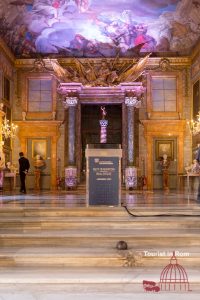
Palazzo Colonna is the largest private palace in Rome. Large banquets and events are held here. In a marble staircase you can see a cannonball shot by the French in the 19th century when they defended the Pope against the Roman Republic. The palace with its art treasures is a total work of art.
Palazzo Massimo and the Baths of Diocletian
Palazzo Massimo is the most popular of Rome’s four national museums, according to Tripadvisor. The others are the opposite Baths of Diocletian, as well as Palazzo Altemps near Piazza Navona and Crypta Balbi near Piazza Venezia.
All four museums are interesting, though our favorite is the Baths of Diocletian. The huge baths are only partially visible today. Today’s Piazza della Repubblica is called Piazza Esedra by the Romans. The semicircle of buildings around the square marks the ground plan of the half-dome “exedra” of the imperial baths. The Basilica of Santa Maria degli Angeli e dei Martiri, which has its entrance from Piazza delle Repubblica, is built inside the Baths. The entrance to the museum is opposite Termini Station in Viale Enrico de Nicola. Of particular interest is the cloister built by Michelangelo, in the center of which there are still trees planted by him.
At the museum ticket offices you can get tickets for a single entry or tickets valid for all four museums for a week.
How to get there
Baths of Diocletian Viale Enrico de Nicola 78Palazzo Massimo Largo di Villa Peretti 2
Palazzo Altemps Piazza di Sant’Apollinare 46, near Piazza Navona
Crypta Balbi Via delle Botteghe Oscure 31
Palazzo Doria Pamhilij
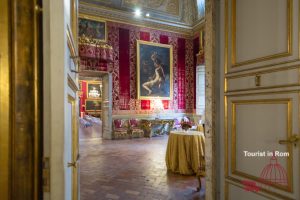
The Pamphilij family reached the highest importance in the 17th century with Pope Innocent X. Donna Olimpia, his brother’s wife, ruled Rome and increased the family’s wealth and importance.
The palace is one of the city’s most important art museums and houses an impressive collection of European artworks from the 16th to the 19th centuries, including paintings, sculptures, decorative arts and art books.
Victor Emanuel II Monument
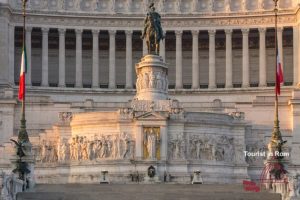
The Vittoriano is a modern building by Roman standards. In the center of the monument, completed in 1935 after 50 years of construction, is the Altar of the Fatherland with the Tomb of the Unknown Soldier and above it the Dea Roma. The President of the Republic lays a wreath here on April 25 and November 4.
Most of the monument is accessible free of charge. Only for the Museum of the Risorgimento, where you can see testimonies of the unification of Italy, you have to pay admission.
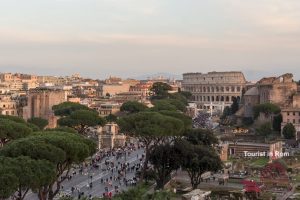
With the same ticket, you can also visit the 15th-century Palazzo Venezia across the street, where Popes, Cardinals and Ambassadors resided and which now houses a Renaissance museum.
The stairs leading up in the Vittoriano make for a good workout. People with disabilities will find a small entrance on the right side and from there you can take an elevator to the top.
A special attraction is the glass panoramic lift that leads to the roof of the monument. From there you have an impressive view in all directions, especially over the city center and on the other side over the archaeological area and the Colosseum to the Basilica of San Giovanni.
How to get there
Both museums are located in Piazza Venezia, which can be reached by numerous bus lines and by streetcar 8.
Capitoline Museums
The Capitoline Museums, located on the hill of the Capitol, are the oldest museum in the world open to the public. The exhibitions cover an area of almost of 13,000 square meters and to want to look at everything is very challenging. There are mainly finds of ancient excavations and collections of past centuries to see. The entrance to the museums is in the palace to the right of the senatorial palace, the Palazzo dei Conservatori.
In the large hall on the 1st floor, the Hall of Horatii and Curiatii, the European Economic Community was founded in 1957. A few rooms away there is the Capitoline Wolf to see. Adjacent to the Palazzo dei Conservatori is the Palazzo Caffarelli. On the upper floor there is a caffetteria with a terrace and a beautiful view over Rome. On the way back to the museum you have to show the entrance ticket.
Since there is not enough space for the collections on the Capitol, a part is located in the Centrale Montemartini, a former electric power station on Via Ostiense. The ancient collections and the old machines make an interesting contrast.
Guided tours
How to get to the Capitoline Museums
To get to the Capitol, take the wide staircase from Via del Teatro di Marcello (bus 30, 51, 81, 83, 85, 87, 118, 160, 170, 628, 715, 716) or from the Fori Imperiali via Via di San Pietro in Carcere ![]()
How to get to the Centrale Montemartini
From the Capitoline Museums take line 715 or 716 from Teatro Marcello to Piramide and from there line 23 or 769 to Ostiense/Garbatella. The nearest metro station is Garbatella / Metro B ![]()
Contemporary
Museo di Roma
The Museo di Roma is located in Piazza Navona in an 18th century palace, Palazzo Braschi. It collects objects and documents about Rome from the Middle Ages to modern times. There is a themed permanent exhibition on the 2nd and 3rd floors, and special exhibitions are on the 1st floor.
In a former Carmelite convent is the Museo di Roma in Trastevere. It used to be a museum of folklore and Roman poets. Watercolors document the disappearing Rome. In addition, there are frequent photo exhibitions by contemporary artists.
Modern Art Gallery
The Gallery of Modern Art of the City of Rome is located in the center between the Spanish Steps and Piazza Barberini.
The museum documents artists in Rome.
Via Francesco Crispi 24MAXXI Museum of 21st Century Arts
The museum is immediately noticeable by the unconventional building designed by architect Zaha Hadid. It is divided into the departments of art and architecture. In addition to exhibiting its collection, the museum sees itself as a laboratory of cultural experimentation and innovation.
The museum calls itself the “National Museum.” This is somewhat misleading because it is a foundation and not a state museum. It therefore does not participate in the free admission days of state museums. The museum offers a hodgepodge of different tickets at the museum box office.
Via Guido Reni 4aMACRO
What to do with vacant industrial buildings? In other cities, they create housing and space for startups; in Rome, they turn them into cultural centers and libraries. The MACRO – Museo di Arte Contemporanea di Roma – also once had a branch in the former slaughterhouse in the Testaccio. What has remained is the headquarters in the former Peroni brewery.
At MACRO, you can watch art in its embryonic stage. Admission is free.
Via Nizza 138Open-air museums
In Rome, you don’t necessarily have to go to a museum. There are relics and monuments all over the city, many of which can be visited for free. Let our list inspire you.
Imperial Forums, Roman Forum and Palatine Hill
Roman Forum and Palatine are part of the Colosseum Archaeological Park and admission is included with the Colosseum ticket. The Imperial Forums are part of the Museums of the Municipality of Rome, but can currently be visited together with the Roman Forum.
There were houses and palaces on the Palatine. The museum and archaeological sites on the Palatine can be visited only with the Colosseum Arena Ticket. The Roman Forum, with its temples and sanctuaries, was the oldest administrative and commercial center. Gradually the imperial fora were added.
Campo Marzio
The Campus Martius is the area from Capitoline Hill to the Tiber River, to the hill of the Quirinal and to today’s Piazza del Popolo. It was the entertainment center in ancient Rome, with thermal baths, sports facilities, theaters and music halls. Today the city center is located here.
The most important sites are Domitian’s athletic stadium, where today Piazza Navona is located, the Pantheon, the Trevi Fountain and the Spanish Steps.
The remains of the stadium can be visited under Piazza Navona. Parts of the ancient water supply of the Campus Martius can be seen underground at the Trevi Fountain.
The Baths of Caracalla
Sports facilities, hot and cold baths were part of the quality of life in ancient Rome. An imposing example are the thermal baths built by the emperor Caracalla until 216. They were the largest thermal baths in the Roman Empire until 306, when they were surpassed by the thermal baths of Diocletian.
The operation of the thermal baths with water and heating required sophisticated logistics. Today, the complex is a popular venue for concerts in the summer. They are located opposite the Circus Maximus and Palatine, where in ancient times the Via Appia began.
Opening hours
9 – 16:30, in summer until 19:00
The Park of the Appia Antica
The Via Appia Antica was turned into an open-air museum in Rome more than a hundred years ago. The road that connects Rome with Brindisi, from where people embarked for voyages to Greece and Egypt, is lined with monuments and tombs. On Sunday, the road is traffic-calmed and a popular destination for Romans and tourists. During the week, the street is very lonely once past the catacombs.
Three catacombs can be visited. At the Circus of Massentius and other complexes the entrance is free, at the Mausoleum of Cecilia Metella and at the Villa dei Quintili there is an entrance fee.
Walkers can reach Santa Maria delle Mole at Ciampino and from there take the train back to Rome.
The excavations of Ostia Antica
The most famous excavations in Italy are located in the area of Pompeii. The volcanic eruption of Mount Vesuvius in 79 buried the area under ash and lava and preserved it for posterity.
But there are also interesting excavations just outside Rome. On the banks of the Tiber River is Ostia Antica, a rich trading city in ancient Rome where goods arrived from all over the Mediterranean. Concerts are still held in the ancient theater.
Opening hours
Opening 8:30; closing 16:30, in summer sometimes until 19:00
How to get there
Viale dei Romagnoli, 717 local train Roma – Lido (from Piramide)The Biopark
The Biopark Rome is located on the edge of the Villa Borghese Park. It was designed together with Carl Hagenbeck and inaugurated in 1910. On about 12 hectares you can see 150 species of animals.
The Biopark participates in international networks for the protection of endangered species. Like the adjacent City Museum of Zoology, one of its main tasks is to introduce children and adults to nature.
Opening hours
In winter 8:30 – 17:00, in summer – 18:00 Sat, Sun – 19:00
Zoology Museum 9 – 19 Monday closed
The Botanical Garden
The Botanical Garden of Sapienza University is somewhat hidden on the slopes of the Gianicolo between Trastevere and St. Peter’s Basilica behind the National Gallery of Ancient Art in Palazzo Corsini on Largo Cristina di Svezia.
In addition to some greenhouses with different environmental conditions, the Japanese garden, the bamboo forest and the ancient trees are particularly impressive.
How to get there
Via CorsiniOpening hours
9 – 16:30, the ticket office closes 1 hour earlier.
Excavations
Rome is a paradise for archaeologists. Discoveries of ancient artifacts are regularly made during construction and renovations.
Ancient tombs and catacombs can be found outside the city walls along all the ancient streets. Depending on where you live in Rome, you have a choice. The catacombs on the Via Appia Antica, the catacombs of St. Agnes on the Via Nomentana, of Priscilla on the Via Salaria or of Marcellino on the Via Casilina are just a few.
The excavations under St. Peter’s Basilica can also be visited. The excavations were started to find the tomb of St. Peter. Emperor Constantine had simply leveled the burial ground for the construction of the first St. Peter’s Basilica. For visits contact the Ufficio scavi.
Very rich in excavations are the hills around the Colosseum. Nero’s golden house, the Domus Aurea, is buried under Colle Oppio, in Colle Celio one can visit a temple of Mithras under the Basilica of San Clemente, and under the Basilica of SS. Giovanni e Paolo the Case Romane, where the two saints are said to have lived.
Other collections
National Gallery of Ancient Art
The Gallery’s collection is divided between two locations, Palazzo Barberini near Piazza Barberini and Palazzo Corsini in Trastevere.
Mercati di Traiano
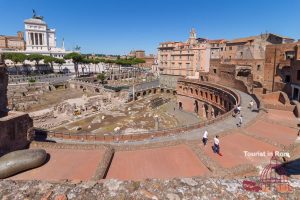
The Markets of Trajan were built in the 2nd century along with the Forum of Trajan, the most recent imperial forum. The museum displays models and findings that reflect the way of life and architecture of the time. There are also thematically changing exhibitions.
The building is built from the level of the Forums into the Quirinal Hill and reaches a considerable height with its numerous floors. From the street level of the museum entrance, one can take an elevator to the top and reach some interesting vantage points over the Imperial Forums.
Galleria Spada
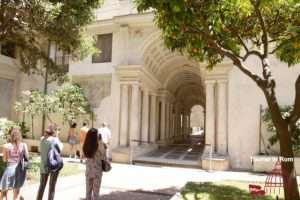
Palazzo Spada is the seat of the Council of State. It is an advisor to the government on legislation and the highest instance of administrative jurisdiction.
In the gallery there is a small art collection. The palace is famous for the Borromini’s optical illusion, in which a portico appears optically longer.
Free entrance
At the Vatican Museums there is free admission on the morning of the last Sunday of the month. However, the queues are very long and it is very crowded.
At the National Museums and the Museums of the Municipality of Rome, admission is free for all on the 1st Sunday of the month. We inform you about any special arrangements in our current monthly information. However, at some museums, especially the Colosseum, queues are very long. At the Borghese Gallery, reservations must be made. You will have more fun visiting smaller museums on these days such as the Roman National Museums, the Baths of Caracalla, the Ostia excavations, the Museo di Roma or the Centrale Montemartini.
At the State Museums, free admission applies to young people up to 18 years of age and to persons with disabilities, as well as to some professional groups and courses of study. At the Colosseum and the Borghese Gallery, reservations are also required for these tickets.
At the Museums of the Municipality of Rome, free admission applies to children up to 6 years old, school groups and persons with disabilities.
At the Vatican Museums, free admission applies to children up to 6 years old and to persons with a disability over 75%.
Museums with free entrance
At some municipal museums in Rome, admission is always free. These are the museums with free entrance:
- Museo di Scultura Antica Giovanni Barracco
- Museo delle Mura
- Villa di Massenzio
- Museo della Repubblica Romana e della memoria garibaldina
- Museo Napoleonico
- Museo Carlo Bilotti
- Museo Pietro Canonica
- Museo di Casal de‘ Pazzi
Virtual tours
Some museums you can visit virtually. They are
>Galleria Borghese
>Musei Capitolini
>Museo dell’Ara Pacis
>Museo Napoleonico
>Mercati di Traiano – Museo dei Fori Imperiali
>Casino Nobile di Villa Torlonia
>Centrale Montemartini
>Museo delle Mura
>Museo di Roma
